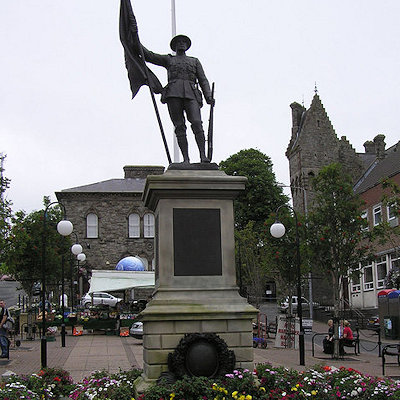
Like us on Facebook
PLACE NAMES


 
|
|
Dungannon
|

|
|
For centuries, Dungannon's fortunes were closely tied to that of the O'Neill dynasty which ruled a large part of Ulster until the 17th century. Dungannon was the clan's main stronghold. The traditional site of inauguration for 'The O'Neill', was Tullyhogue Fort, an Iron Age mound some four miles northeast of Dungannon. The clan O'Hagan were the stewards of this site for the O'Neills. In the 14th century the O'Neills built a castle on what is today known as Castle Hill; the location was ideal for a fort as it was one of the highest points in the area, and dominated the surrounding countryside with the ability to see seven counties depending on the weather.
This castle was burned in 1602 by Hugh O'Neill, 2nd Earl of Tyrone as Crown forces under Lord Mountjoy closed in on the Gaelic lords towards the end of the Nine Years' War. In 1607, ninety-nine Irish chieftains and their followers, including Hugh O'Neill, set sail from Rathmullan, bound for the continent. What followed became known as the Plantation of Ulster and the town and its castle were granted to Sir Arthur Chichester, one of the architects of the plantation.
In 1641 after seizing the town in the opening stages of the Irish Rebellion, Sir Phelim O'Neill issued the Proclamation of Dungannon in which the rebels set out their aims and proclaimed their loyalty to Charles I. O'Neill hinted that they had been ordered to rise by the King and later produced a commission which he claimed Charles had issued to him.
The castle was partially excavated in October 2007, by the Channel 4 archaeological show Time Team, uncovering part of the moat and walls of the castle. In 1973, the town became the seat of the new district of the Dungannon and South Tyrone Borough Council. In 1782, the town was the location where the independence of the Irish Parliament was declared by members of the Protestant Ascendancy who controlled the parliament at the time.
|
 Feel free to Email me any additions or corrections Feel free to Email me any additions or corrections
LINKS AVAILABLE TO YOUR SITE
| |





